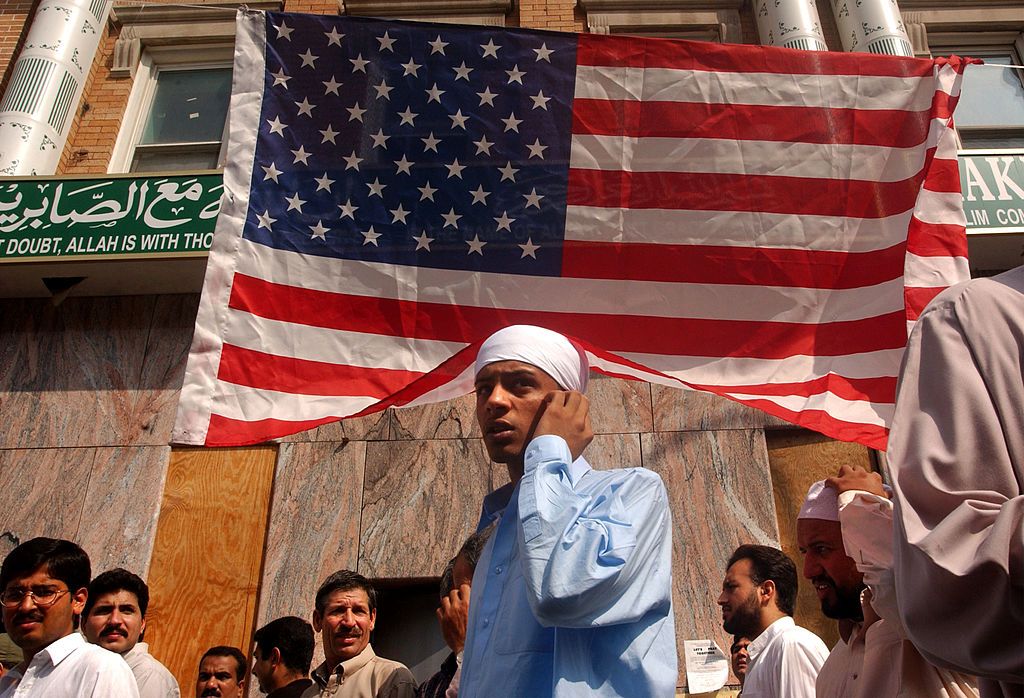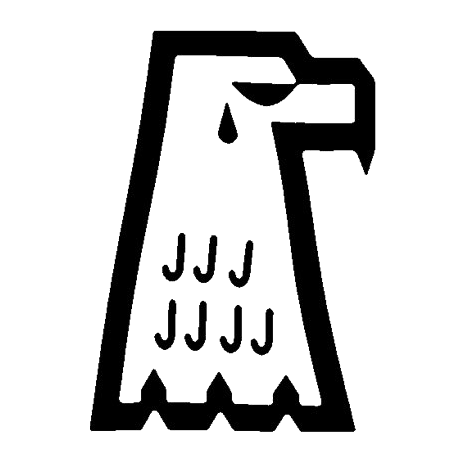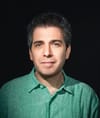Return To Little Pakistan: The Reign of Terror in Brooklyn after 9/11
Pundits and politicians declared America united while "unity” preyed upon New York City’s Muslim communities. We must never forget. Part 1 in a series


Edited by Sam Thielman
SHE WAS 15. “When the attacks of Sept. 11 came I was called the Taliban because my last name sounds like Taliban.” She didn’t report it. She was “scared to tell people.”
She was 12. “They called my people and me terrorists. … I get cursed at and I start to lose my temper.” She didn’t report it. “I didn’t want to start problems.”
He was 11. “They called me Paki Bitch. They called my dad Osama.” He didn’t report it. “It would make it worse.”
She was 15. “In school, guys pull down my scarf.” She didn’t report it. “I didn’t want them to get in trouble.”
She was 13. “They made fun of my religion and culture and where I came from.” She did report it. Her school’s administrator “did nothing… it made me scared to go to school.”
Every single one of them was a New Yorker. Every single one of them, in particular, was a Brooklynite, which made them heirs to both a vibrancy built by immigrants over generations; and to a legacy of persecution, each in their own times, by their neighbors. After 9/11, the darkness of American history, and the darkness of New York City history, came for them.
American elites, like blackout drunks, remember the post-9/11 period differently. America was united after that day of horror, they have said for the past 20 years. I heard recently during a Morning Joe appearance about “the national unity that surrounded the country in the weeks and months after” 9/11.
There was a national solidarity that existed after 9/11—I saw it on Friday, Sept. 14, 2001, at the improvised collection point for Ground Zero materials, among the would-be volunteers. They talked about driving all through the night – multiple nights, some of them – from faraway states because, whether they were from the South, the Midwest, or New England, they felt compelled to help their fellow Americans in New York.
But the political leadership of the United States ensured that, instead of solidarity, there would be bloodlust. They explained 9/11 as the product of a violent pathology, afflicting not the American leaders eager to wage war, but everyone who looked like, or worshipped like, or came from the same cultures as these children.
These young New Yorkers went through the same horror the non-Muslims next door did. They saw their neighbors die in flames, saw them jump from the inferno into a different form of certain death, saw the flutter of office paper drift across the East River and into New York Harbor, smelled the air made nauseatingly sweet by many hundreds of burning bodies, agonized over those they lost, lit the votive candles around streetlights and outside bodegas. They felt the fear of a follow-on attack that might come for more of the people they loved, or for themselves. They were New Yorkers. They didn’t know how to be anything else.
But they would not be treated like New Yorkers. There was no one to kill in the name of their trauma. Instead, they would be hunted, a hunt fueled by the weaponized trauma of their neighbors.
IN LITTLE PAKISTAN, within weeks of 9/11, business cards appeared under house and apartment doors.This is the FBI. This is the INS. This is the NYPD. We need to talk. I have questions. Call me. ASAP.
The business cards are preserved today in plastic sheafs, the sort once used for baseball cards, assembled through three-hole-punch rings into a heavy binder. Entire 40-man rosters of feds could be assembled from all the cards. In another binder, compiled by the 50-year old Mohammad Razvi, a small businessman who became a leading figure in the neighborhood, are faded papers recording the accounts of the children quoted above. The binders testify to the scope of the Joint Terrorism Task Force’s intense interest in the neighborhood after 9/11.
Little Pakistan is a seam of a neighborhood that runs along the arterial Coney Island Avenue in central Brooklyn. It begins at the southwestern edge of what’s now known as Ditmas Park and terminates a mile south in Midwood. The heart of it – storefront restaurants like Lahore Chilli, basketball courts in the PS 217 playground, immigration-law offices near dialysis centers and auto-body shops – runs from Ditmas Avenue through Foster Avenue and tapers off after Avenue H. In a classically New York fashion, Little Pakistan is a working-class immigrant neighborhood both proximate to upper-middle-class wealth, and distant from it.
Like Jackson Heights, Sunset Park, Washington Heights, Corona, or Wakefield, Little Pakistan is one of the neighborhoods that makes New York New York – it’s not the New York that gets depicted in movies or the broader media landscape, except in exoticized or frightening ways; and so transplants interact with it, if at all, primarily for a brief food excursion. But it is the New York cherished by those who grow up here, and by those who move here and remain.
I grew up, and still live, about a mile from Little Pakistan. At times the cultural and class divisions make knowing the place elusive. But after the Towers fell, the terror that afflicted my neighbors there was impossible not to know.
Razvi flipped through the binders in his office on Coney Island Avenue, just south of Foster, on a stiflingly hot August day. He paused on one particular card.
The person who received it “came to my office crying,” Razvi recalled. “I said, ‘Take it easy, what happened?’ He said, ‘I’ve been sleeping in my car for the past four days… because I’ve seen this card.’” The man explained to Razvi that he and his friends went on a quick vacation to Niagara Falls.
Razvi called the FBI agent who slipped their card under the returned vacationer’s door. “I said, ‘Listen, this guy barely speaks English, and I’d like to be present’’” for an interview. When they spoke, the FBI agent explained that “one of the pictures they took” at Niagara Falls “was too close to the courthouse.” Left unstated was the truth: After 9/11, if you look like the vacationer did, your tourist photos could be all the investigative predicate that federal law enforcement needs.
“Because they looked like some Middle Eastern men, some police officer had seen them and just made a phone call and jotted the license plate,” Razvi said. As he would for many of his neighbors, Razvi arranged for the vacationer to show the FBI his camera so his case file could be closed.
“So this was the fear that was going on,” Razvi said. “I can’t even tell you how dangerous it was, because people, when the agencies started to do what they were doing, when the government started to state what they were stating – special registration program, all these other programs – you were damned if you did, damned if you didn’t.”
The roundups began very soon after 9/11. People from Little Pakistan and other Muslim enclaves began disappearing into the area’s warren of jails for questioning. 20 years later, the total number of those rounded up in the FBI’s PENTTBOM investigation is still unknown. But a Justice Department report from 2003 assessed that around 450 people from the greater New York area were rounded up – the vast majority “on immigration charges that, in a time and place other than New York City post-September 11, would have resulted in either no confinement at all or confinement in an INS or INS contract facility pending an immigration hearing.”
“The people arrested, we would never know where they were keeping them, what were the charges,” said Bobby Khan, a 64-year old activist and immigrant from Pakistan from a labor-advocacy background.
Rachel Meeropol of the Center for Constitutional Rights, an ally of Khan’s, recalled a “never-ending feeling of scrutiny” amongst residents of Little Pakistan – “the sting of the ongoing lack of acknowledgment that what happened to their community was wrong.”
“Quite frankly,” Razvi summarized, “Little Pakistan was on its own.”
THE RESPONSE OF MANY residents was to get out before they ended up caged or deported. Khan quickly found himself with an accumulation of 70 to 80 apartment keys. Residents of Little Pakistan, and other Muslim enclaves in Brooklyn, simply fled.
“Food was still in the fridges. Kids’ clothes were hanging [to dry]. They moved to Canada,” Khan remembered. By one estimate in 2003, ostensibly based on Pakistani government statistics, 15,000 of Little Pakistan’s 120,000 residents up and left. “That time, it was a very scary situation.”
Khan and Razvi chose two very different responses, both typical of community leaders in Little Pakistan. Razvi, who was running multiple small businesses before 9/11 changed his life, made himself a critical liaison between the frightened people of the neighborhood and law enforcement.
“My kids, my grandkids that are going to live here, my children live here, I live here, I’m not going nowhere. I’m an American. My kids are American,” Razvi recalled. “I started working with the Department of Justice, understanding hate crimes, doing presentations. I’m one of the lead teachers for the Department of Justice on talking about the engagement for Muslim communities and law enforcement, which I really hold dear, because that took some time for me to get done. I’m focused on that because I think it’s for the betterment of our community – we need to understand each other, especially for law enforcement and our community members. You can’t just knock on a door and expect a young lady to open it. She’s going to need a minute because she’s putting on a scarf and you’re a male.”
Khan, who was jailed in Pakistan for his left-wing activism, sees no hope in cooperating with the police.
“The police, post-9/11, is desperate to create informants. They were offering money, legal status, threatening [people] with criminal prosecution or deportation,” he said. “I couldn’t tolerate it. Your hatred against our community, created by you, to our people. You, the police, is responsible for it. But clerics and [other community] leaders say, ‘Oh no, don’t say that.’”
Accordingly, the two men have divergent opinions about what Little Pakistan and its residents face from law enforcement 20 years after 9/11. Razvi sees “a night-and-day difference,” both in the FBI and in the NYPD’s 70th Precinct. “They translate things into the languages I needed, in Arabic, in whatever languages I request. There’s so many changes that they’re doing also, that they are like, ‘OK, we gotta work with the community.’”
Khan disagrees. “The damage has already been done,” he said in late July. “Here, it never goes away. The task forces – NYPD Intelligence, DHS, FBI – although they’re dissolved, the fear was sowed by those agencies. They still work with informants. Here.”
COMING TUESDAY 9/14: The post-9/11 story of Bobby Khan, against the backdrop of the post-9/11 NYPD
COMING TUESDAY 9/21: Mohammad Razvi tries to hold Little Pakistan together, from 9/11 to COVID-19

